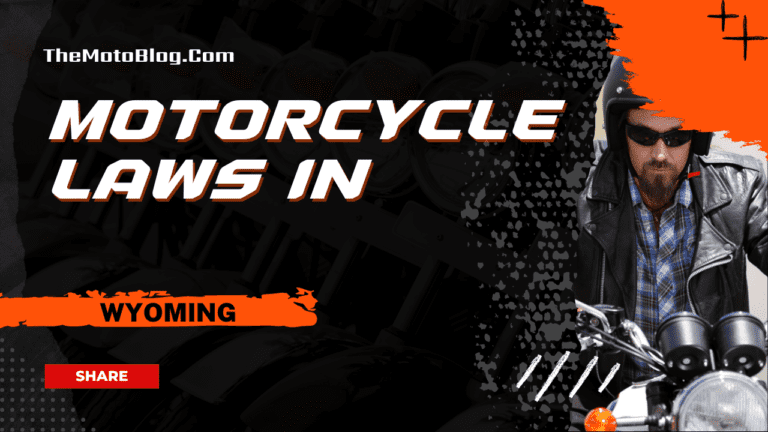Motorcycle Laws in West Virginia: A Comprehensive Breakdown for Enthusiasts
West Virginia, with its breathtaking Appalachian landscapes and winding mountain roads, attracts motorcycle enthusiasts from across the country. Bordered by Virginia to the east, Maryland to the northeast, Pennsylvania to the north, Ohio to the northwest, and Kentucky to the southwest, the Mountain State requires specific motorcycle regulations to ensure rider safety across its diverse terrain. Before hitting the scenic routes like the famous Highland Scenic Highway or the historic Midland Trail, riders must familiarize themselves with the state’s comprehensive motorcycle laws and regulations.

| Requirement | Specification |
|---|---|
| License Type | Class F motorcycle-only or motorcycle endorsement |
| Minimum Age | 16 years old |
| Helmet Law | Mandatory for all riders and passengers |
| Helmet Standards | Must meet DOT, Snell, or ANSI Z 90.1 |
| Eye Protection | Required – safety glasses, goggles, or face shield |
| Lane Splitting | Not permitted |
| Mirrors | Must provide 200-foot rear view |
| Headlight | Visible from 100 feet at 25+ mph |
| Insurance Minimum | $20,000/$40,000 bodily injury, $10,000 property |
| Passenger Age | No minimum age requirement |
| Passenger Equipment | Dedicated seat and footrests required |
| Excessive Motorcycle Sound rules | Motorcycles must be equipped with a manufacturer-installed muffler or equivalent replacement in good working order to prevent excessive noise, |
| Permit Duration | 180 days, no renewal |
| Permit Restrictions | Daytime riding only |
| Skills Test Wait | 7 days after permit acquisition |
| Points Warning | Letter issued at 6 points |
| License Suspension | 30-120 days at 12+ points |
| Documentation | Registration and insurance proof required |
| Windshield | Must meet DOT standards if equipped |
| Insurance Documentation | Must carry proof while riding |
| Accident Claims | Two-year statute of limitations |
Licensing Requirements
Getting your motorcycle license in West Virginia requires meeting specific criteria. New riders must obtain either a Class F motorcycle-only license or add a motorcycle endorsement to their existing driver’s license. The state maintains strict standards to ensure rider competency and road safety.
License Testing and Documentation
Applicants must pass both written and practical tests, though the skills test may be waived upon completing an approved Motorcycle Safety Program. Required documentation includes a valid state or federal photo ID. Instructional permits are valid for 180 days with daytime-only riding privileges and cannot be renewed.
Safety Equipment Requirements
Helmet Laws
West Virginia enforces mandatory helmet use for all riders and passengers. Helmets must meet Department of Transportation (DOT), Snell Safety Standards, or ANSI Standard Z 90.1 specifications. Each helmet requires secure fastening with a neck or chin strap and must be designed to withstand impacts.
Additional Safety Gear
Riders must wear appropriate eye protection meeting ANSI Standard Z2.1, which includes safety glasses, goggles, or face shields. This requirement ensures clear vision and protection from debris while riding through West Virginia’s varied terrain.
Operating Regulations
Road Rules
Motorcyclists must maintain single-lane operation, as lane splitting is prohibited in West Virginia. Bikes must be equipped with rearview mirrors providing a 200-foot rear view and headlights visible from 100 feet when traveling at speeds over 25 mph.
Insurance Requirements
All motorcyclists must carry minimum insurance coverage:
- $20,000 for bodily injury per person
- $40,000 for bodily injury per accident
- $10,000 for property damage per accident
Vehicle and Passenger Regulations
Equipment Standards
Motorcycles must have properly installed rearview mirrors and DOT-compliant windshields if equipped. Passenger accommodation requires dedicated seating and footrests, though there are no age restrictions for passengers.
Documentation and Registration
Riders must maintain current registration and carry proof of insurance at all times while operating their motorcycles in West Virginia.
Traffic Laws and Enforcement
Rules of the Road
Motorcyclists follow the same speed limits as other vehicles and must yield right-of-way at intersections when making left turns. The state uses a points system for violations, with 6 points triggering a warning letter and 12+ points resulting in license suspension ranging from 30 to 120 days.
Understanding and following West Virginia’s motorcycle laws is crucial for both safety and legal compliance. Whether you’re a resident or a visitor exploring the state’s scenic byways, these regulations are designed to protect riders while preserving the freedom of motorcycle travel. For those planning cross-state adventures, it’s essential to note that neighboring states like Virginia and Pennsylvania may have different requirements. The mountain roads of West Virginia offer some of the most spectacular riding experiences in the eastern United States, and following these laws ensures that all riders can safely enjoy what the state has to offer. Riders venturing into Maryland or Kentucky should also familiarize themselves with those states’ specific regulations to ensure a smooth, compliant journey across state lines.
Motorcycle Laws in the US By States
If you liked this article, then please subscribe to our YouTube Channel for more Bike Videos. You can also find us on Instagram, Twitter and Facebook.
Disclosure: As an Amazon Associate, I earn from qualifying purchases. Read more about Amazon Affiliate Disclaimer.

Vishwanath Mathpati
I am Vishwanath Mathpati, a full-time Blogger and Motorcyclist from Bidar, Karnataka. I love writing about my Motorcycles Stories and Riding Gears on this blog.
Know More About Me.






